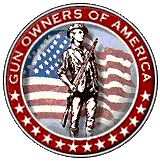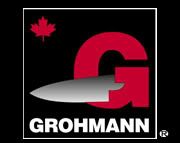Mom's place was where I shot for many years. I could go anytime and shoot safely at ranges up to about 100 yards. That was usually sufficient distance and I had enough and sufficient backstops in the right place to shoot safely. It was a big bonus that my parents' neighbors didn't mind shooting. However, about 1998 the daughter of one neighbor managed to get permission to put in a double-wide (twice wide in some areas) trailer home. Unfortunately, she and her husband put it all the way to the rear of the lot. This reduced safe shooting lanes on our land as well as eliminated a whole swath of dangerous ground for the groundhogs, crows, coyotes and such. It hasn't bothered them very much as her husband is content to shoot TOWARDS the ROAD from his house. Nothing has thus far dissuaded him. I've been waiting for him to hit somebody as they bomb down the road but it hasn't happened yet. The placement of their home has also knocked out a chunk of prime deer highway from safe shooting. Then, last year, Mom died. Since we were going to sell the place to settle the estate it was very obvious that I was going to need another place to shoot.
I had been going to Hite Hollow Range which was constructed by locals with private funds on National Forest land about 26 miles south west of Staunton just off SR 42 near Augusta Springs. This range has had a lot of use and I personally know of at least 3 people who have driven from Charlottesville to the range just to find a place to shoot. There are a separate pistol range (25 meters, two points) and rifle range (50, 100, 150 meters and eight points). Firing points for both ranges are covered. There is adequate parking and a pretty standard USFS pit toilet. Unfortunately there have been repeated acts of vandalism at the range, thefts from shooters while they were working their targets and, rumor has it, threats from groups who took over the range and blocked other users out. The vandalism has resulted in repeated threats by the U.S. Forest Service that they will close the range. Again, it is clear that a better solution is needed.
 The Stonewall Rifle and Pistol Club has a range on US 250 aka Hankey Mountain Highway. There is a trap range, covered firing points, a club house, secured access (locked gate), and almost as important other members who look out for one another as well as conduct shooting events. It does require and initiation and membership fee and a couple of workdays each year but that is part of being a member of a club with property to maintain. It isn't much more difficult to get to than the Hite Hollow Range and certainly is likely to be safer from a personal security point of view. However, there are only about 300 members of the club (I think that's right) and membership applicants have formed a queue. I knew that and so I applied this past fall for a membership. I expected to have to wait 2-3 years to actually be accepted.
The Stonewall Rifle and Pistol Club has a range on US 250 aka Hankey Mountain Highway. There is a trap range, covered firing points, a club house, secured access (locked gate), and almost as important other members who look out for one another as well as conduct shooting events. It does require and initiation and membership fee and a couple of workdays each year but that is part of being a member of a club with property to maintain. It isn't much more difficult to get to than the Hite Hollow Range and certainly is likely to be safer from a personal security point of view. However, there are only about 300 members of the club (I think that's right) and membership applicants have formed a queue. I knew that and so I applied this past fall for a membership. I expected to have to wait 2-3 years to actually be accepted.Last Friday I received my acceptance letter. Monday I called the secretary to let him know that I still intended to join and would be present at the 11 July meeting. I'm excited. This means I'll have a place to shoot and that is important to me.


































